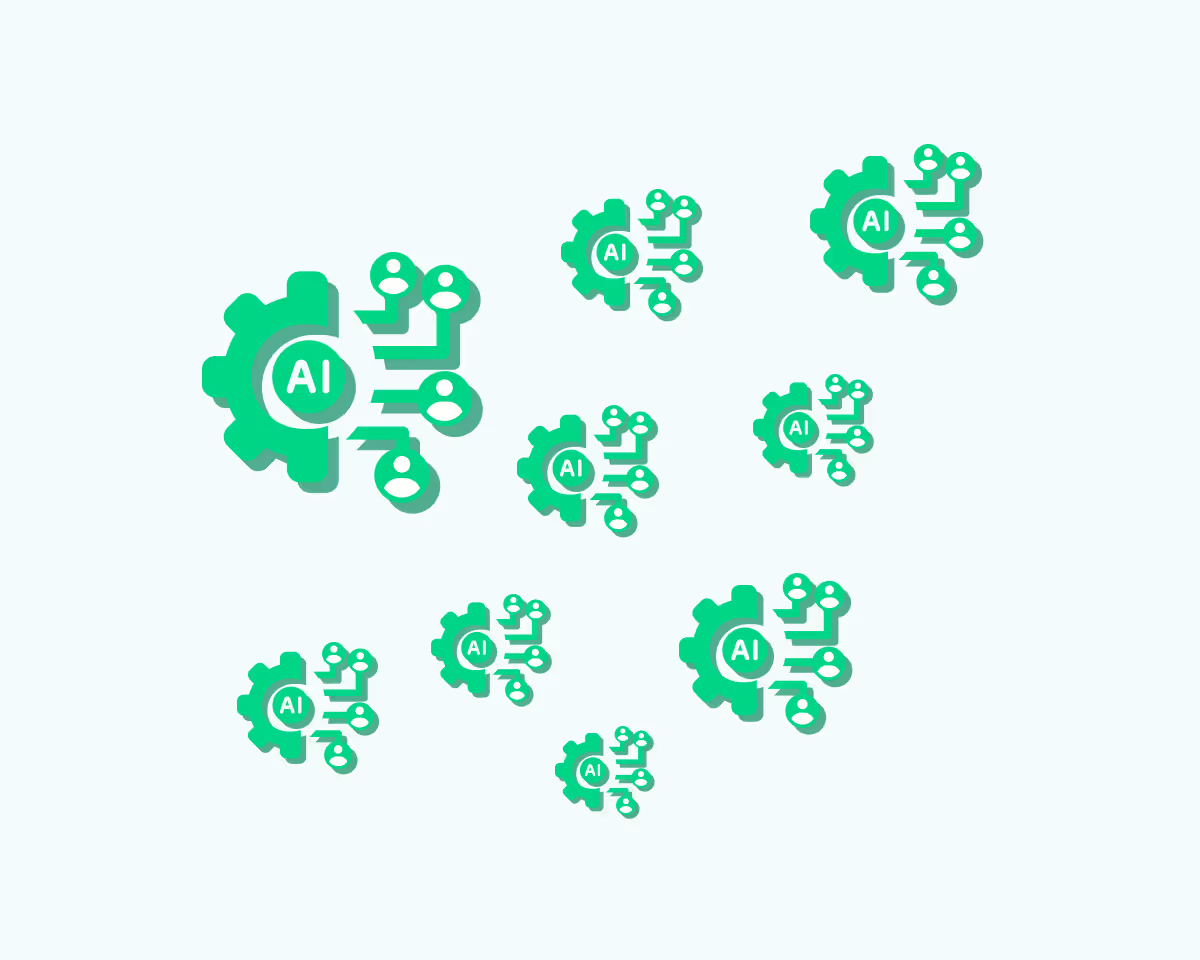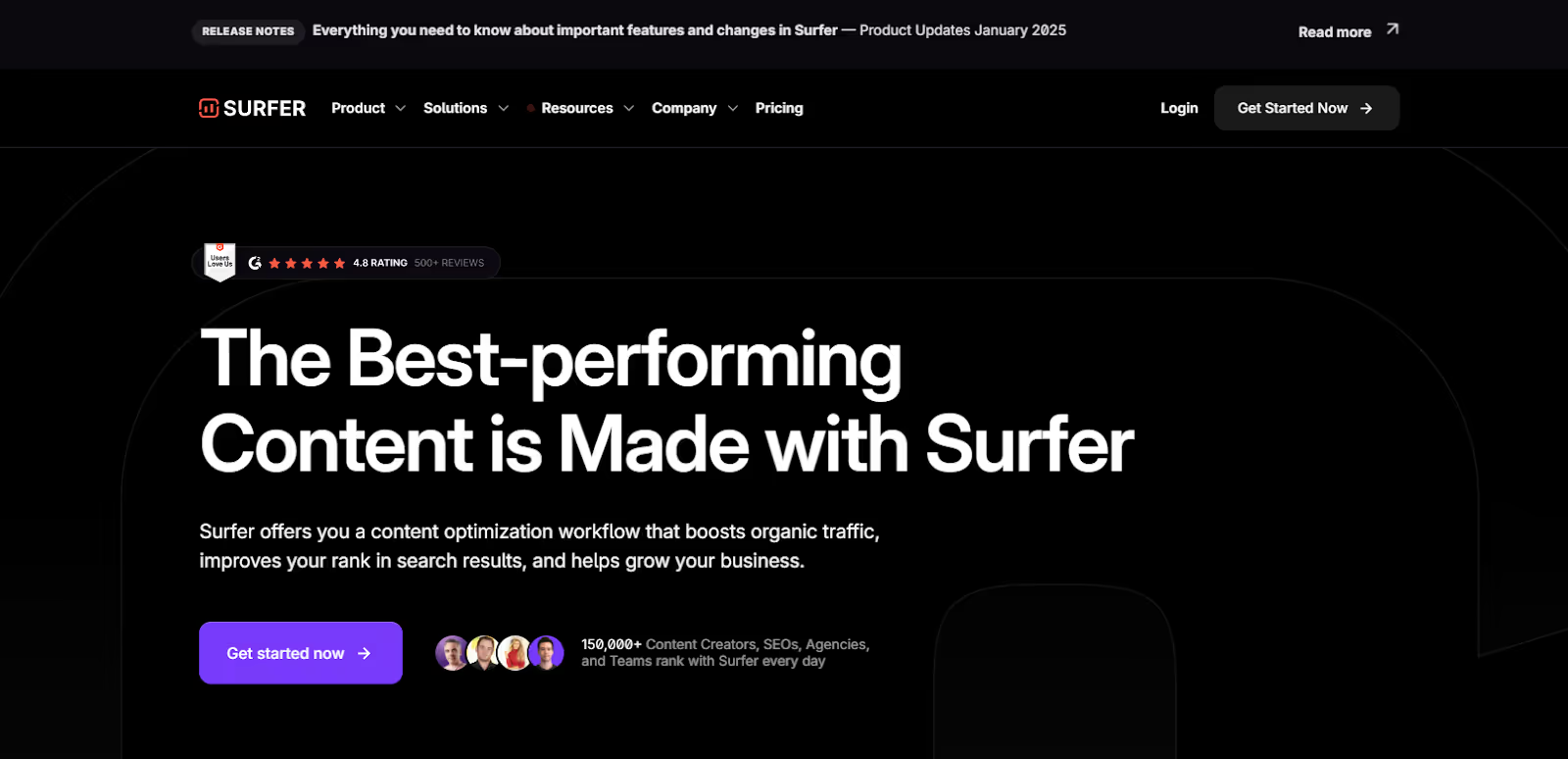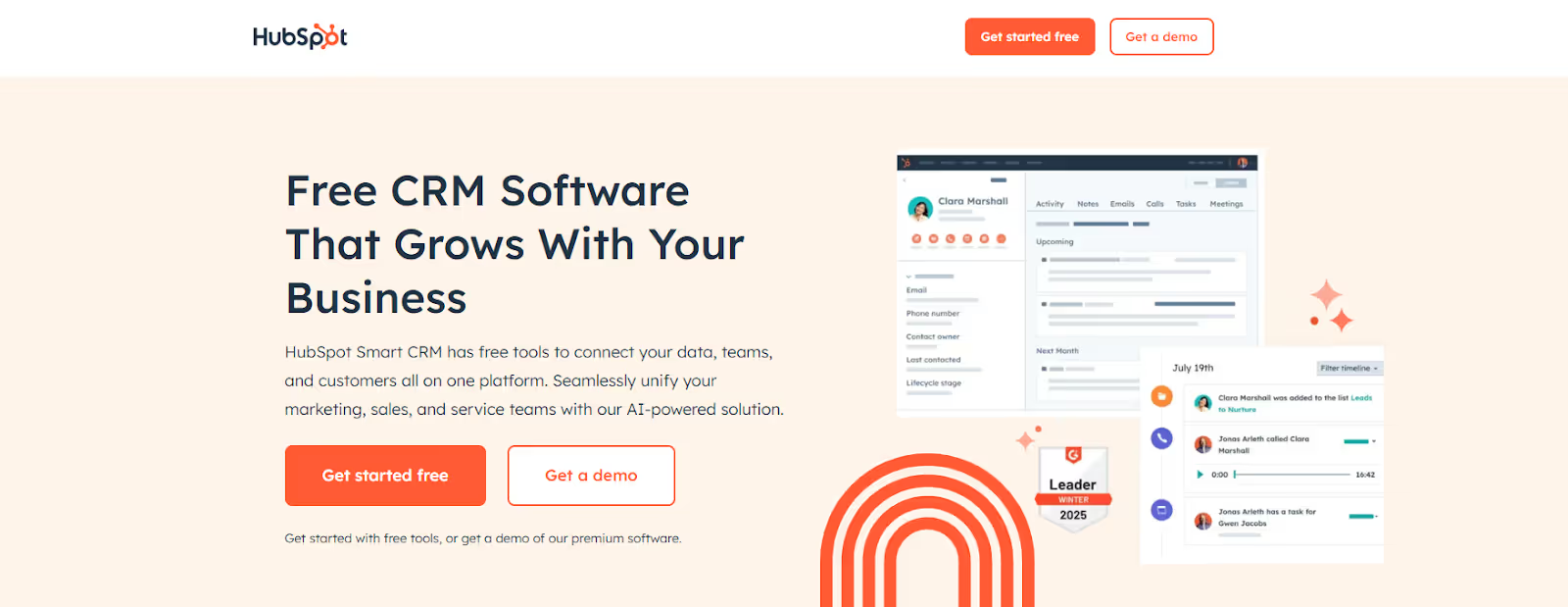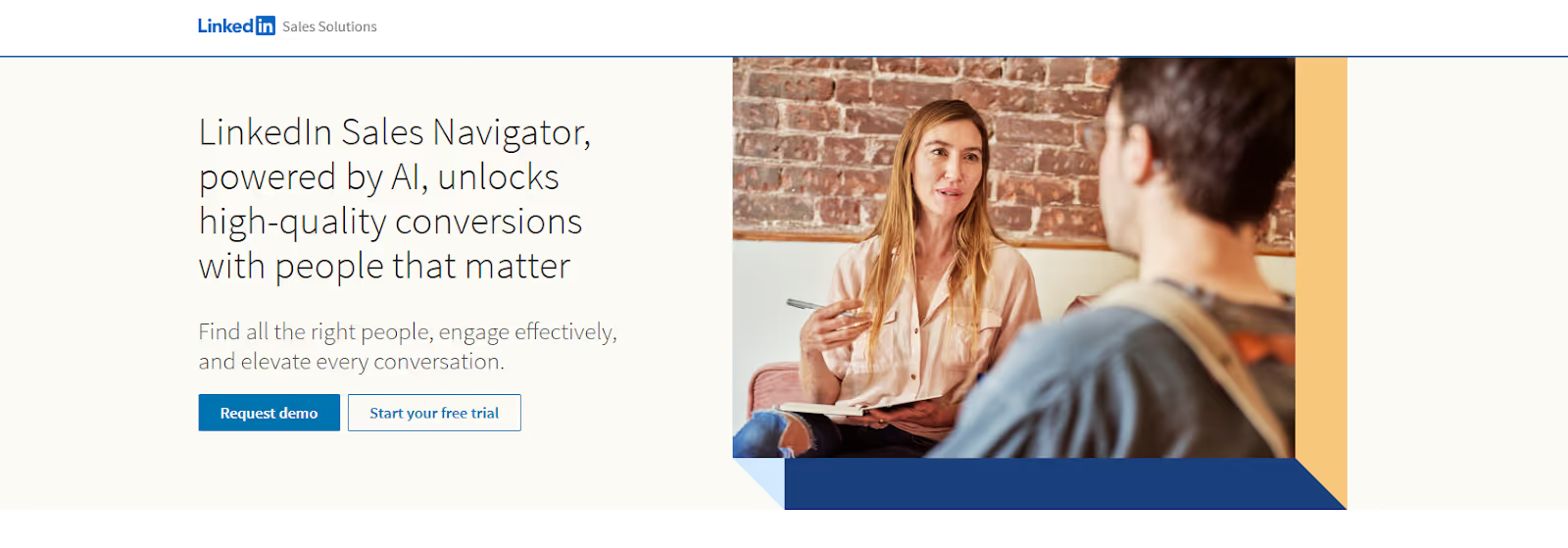Ready to create more pipeline?
Get a demo and discover why thousands of SDR and Sales teams trust LeadIQ to help them build pipeline confidently.



AI lead generation can help reps identify the best prospects much faster and engage them more effectively.

But like any other piece of technology, AI-powered lead gen tools have their pros and cons.

By understanding the strengths and limitations of AI lead generation and the smartest way to incorporate it into your prospecting workflows, you can engage more prospects more effectively.
Get a demo and discover why thousands of SDR and Sales teams trust LeadIQ to help them build pipeline confidently.
AI-driven lead generation is rapidly transforming the way businesses identify and engage potential customers. In this new age, traditional lead generation tactics — like basic cold calls, generic cold email outreach, and manual data mining — are being replaced by intelligent systems that analyze vast amounts of data, predict buyer intent, and personalize outreach at scale.
By using AI, companies can automate lead scoring, refine targeting, and nurture prospects more effectively — resulting in higher-quality leads and improved conversion rates. As a result, reps can spend more time focusing on closing deals instead of chasing dead-ends.
That said, not all AI-powered lead generation tools are created equally. If an agency or new tool promises you 100 AI-generated leads for a low, low price — you’ll probably want to think twice. Quality leads require more than just scraping random contact lists and blasting messages into the void.
If you’re looking to learn how to generate leads with AI, you’ve come to the right place. Keep reading to learn how you can use AI to automate lead generation, the pros and cons of generating leads with AI, different ways to use AI for lead generation, along with some top AI sales tools that can supercharge your prospecting efforts.
AI lead generation is the process of using artificial intelligence to identify, qualify, and engage potential customers.
By leveraging machine learning, data analytics, and automation, AI can analyze large datasets rapidly, predict buyer intent, and personalize outreach. By eliminating manual tasks like data entry and mass email outreach, AI enables businesses to scale their lead generation efforts efficiently — all while improving lead quality and conversion rates.
AI lead generation tools come in two flavors: fully automated AI lead generation and AI-powered lead generation tools. The former relies entirely on AI and algorithms to find and engage leads with no human intervention. While this can be efficient, it often lacks the nuance and personalization that human-led sales efforts require.
AI-powered lead generation, on the other hand, enhances human efforts by equipping sales teams with data-driven insights, predictive analytics, and automation tools to help sales reps be more effective. This approach enables sales reps to generate higher-quality leads faster while maintaining the personalized touch needed to build strong customer relationships.
If you’re asking us, we believe in AI-powered lead generation over fully-automated solutions. Humans crave personalized, authentic interactions and outsourcing some of the most important moments in the sales process to a machine can create chaos and turn prospects off of your brand.
Depending on the AI tools you ultimately invest in, there are tons of ways you can generate leads using artificial intelligence, including:
We’ll examine each of these use cases in depth later on in this article.
While AI lead generation can transform the way you do business, it’s equally important to learn how not to use the technology. Bad lead generation tactics are everywhere, and they often do more harm than good.
For example, the classic “spray-and-pray” approach — i.e., blasting the same generic message out to thousands of people — rarely converts and can damage your brand’s credibility and land you in the spam folder. Similarly, sending out mass automated LinkedIn messages with no personalization makes you look like a bot instead of a real person. Even worse, relying on AI-generated comments on social media posts to engage prospects comes across as lazy and inauthentic.
Effective lead generation isn’t about spamming as many people as possible and hoping something sticks. It’s about targeted, meaningful outreach that builds real relationships.
To say sales has changed over the years would be the biggest understatement of the millennium. In the digital world where attention comes at a premium, gone are the days of cold calls, door-to-door selling, and salespeople using your alma mater as a form of personalization.
In 2024, the market for AI sales tools commanded $2.12 billion. By 2037, that figure is projected to balloon to $35.47 billion, growing more than 24% each year in between.
Even so, you don’t want to simply get caught up in the hype; AI is a tool, not a magic bullet. To truly benefit from the technology, you need to ensure it adds value to your current lead generation process.
As you begin leveraging AI lead generation, start with the low-hanging fruit; use AI in areas that don’t directly engage prospects — like analyzing your existing data or automating list building. By doing so, you can get a feel for the tools while minimizing the risk of making public mistakes.
As you continue learning and improving, you can scale AI’s role and apply it to more complex tasks — all while ensuring it complements your existing strategies. Instead of jumping headfirst into a shiny new tool, start slowly, iterate, and then scale.
Imagine logging into LinkedIn only to find your inbox filled with a series of generic messages that sound like they were written by a robot, each one more impersonal than the last, and all claiming to have exactly what you need.
It’s a frustrating experience to say the least. Unfortunately, it’s an experience many folks have lived through with reps letting AI lead generation tools take the reins and roam freely.
While AI can work wonders when used correctly, allowing it to take full control is where you end up doing more harm than good. Like any other piece of technology, AI lead generation tools have their advantages — but they also have their limitations.
AI is transforming the way companies generate leads, offering dozens of ways to enhance efficiency and effectiveness. But rather than relying on fully automated AI lead generation, you’re best off using an AI-powered lead generation strategy and empowering your team with smarter tools.
By leveraging AI to streamline workflows, analyze data, and optimize outreach, businesses can generate higher-quality leads while maintaining a human touch. In this section, we’ll explore nine ways you can integrate AI into your lead generation strategy — ensuring you get the benefits of the technology without sacrificing authenticity or relationship-building.
By analyzing vast amounts of data rapidly, AI can help your business define your ICP with greater precision. Instead of relying on broad demographic filters, AI evaluates behavioral patterns, firmographic data, and engagement history to pinpoint the characteristics of your best customers. By leveraging machine learning models, you can continuously refine your ICP based on real-time insights — ensuring that your outreach targets the most promising accounts.
Beyond just defining your ICP, AI can also predict which prospects are most likely to convert. By analyzing past deal data and customer interactions, AI tools can score leads based on relevance and buying intent. As a result, your sales team spends less time chasing low-quality leads, giving them more time to engage with high-value prospects.
AI can help businesses identify opportunities for upselling and cross-selling by analyzing customer behavior, purchase history, and usage patterns. Machine learning models can detect signals — like increased product engagement, specific feature usage, and repeated purchases — that indicate a customer may be ready for an upgrade or an additional service. By leveraging AI-driven insights, sales teams can proactively offer relevant recommendations customized to each customer’s needs, increasing the chances of a successful upsell.
Beyond purchasing behavior, AI can analyze support tickets, survey responses, and sentiment data to identify customers who might benefit from complementary products. Instead of relying on guesswork, AI pinpoints the best moments to introduce new offerings, making recommendations seem natural — not pushy. This targeted approach boosts revenue and also enhances customer satisfaction by delivering solutions that genuinely add value.
AI can streamline list building by quickly gathering and analyzing tons of prospect data from multiple sources. Instead of manually searching for leads, AI tools can scrape websites, analyze intent data, and filter contacts based on firmographics, job titles, and engagement signals — ensuring your lists are highly targeted and relevant.
At the same time, AI can also keep contact lists fresh by automatically updating outdated information and removing inactive leads. By continuously refining and enriching your database, AI helps sales teams focus on high-quality prospects — saving time while improving the effectiveness of outreach.
AI improves lead enrichment by automatically gathering and updating key details about prospects from multiple data sources. It can pull in firmographic data, social media activity, and recent news mentions. This gives teams a complete and up-to-date view of each lead — which ensures outreach is more personalized and relevant.
Additionally, AI can analyze engagement signals — like email interactions and website visits — to predict a lead’s intent. By providing deeper insights into a prospect’s needs and interests, AI-powered lead enrichment helps sales teams craft more compelling pitches while improving conversion rates.
AI can streamline cold email drafting by generating personalized, high-quality messages in seconds. Using a tool like LeadIQ Scribe, reps can send customized, relevant emails to prospects in seconds, as the technology rapidly analyzes a prospect’s industry, role, and past interactions. Not only does this reduce the time spent writing, it also increases the chances of getting a response.
Additionally, artificial intelligence can optimize subject lines, tone, and calls-to-action based on what’s historically performed well. By continuously learning from past email campaigns, AI helps refine messaging to improve open and reply rates, making cold outreach more effective and less time-consuming.
While video can be a very effective medium for sales, it’s difficult to personalize outreach at scale using this format.
Enter AI — like Vidyard’s AI Avatars — which can create videos with your likeness in minutes. Just record a video to train the AI, the technology then creates your avatar, you feed it a script, and voila — personalized video outreach at scale, in just a few clicks. Ultimately, this makes video outreach feel more engaging and relevant without requiring excessive manual effort on your part.
AI can automate cold outreach inbox warm-up by gradually increasing email activity to improve sender reputation. It stimulates real interactions by sending and receiving emails, marking them as important, and avoiding spam filters — all of which increases cold email deliverability, ensuring your emails hit inboxes instead of spam folders.
At the same time, AI can also monitor deliverability metrics and adjust sending patterns to maintain a healthy email reputation. By analyzing engagement rates and making real-time optimizations, AI ensures outreach remains effective — maximizing the chances your messages are seen and opened.
AI can improve lead routing by automatically analyzing and categorizing incoming leads based on predefined criteria — like industry, job role, and buying intent. This ensures that leads are sent to the reps who are best suited to handle them, increasing the likelihood of conversion.
What’s more, AI can continuously learn from historical data to further refine routing decisions. By analyzing past sales interactions and conversion rates, AI can adjust the criteria for routing leads more effectively, ensuring that high-quality leads are prioritized and assigned to the right person.
AI can enhance lead scoring by analyzing various data points across your sales pipeline and converted customers — like engagement history, demographics, and behavior patterns — to assign scores that better predict a lead’s likelihood of conversion. By using machine learning algorithms, AI can identify the most valuable prospects, ensuring that sales teams focus on leads that are more likely to result in a sale.
AI-powered lead scoring also continuously learns and improves over time. As more data is gathered, AI adjusts scoring models based on the leads that have converted in the past, providing more accurate predictions. This dynamic system helps sales teams stay aligned with market trends and customer behavior — improving overall sales efficiency and lead quality.
As AI continues to transform the way businesses operate, more tools are emerging to help teams generate higher-quality leads faster and more efficiently. If you’re looking to build a best-in-class sales organization, you should implement AI-powered lead gen tools to ensure your team stays ahead of the curve.
With that in mind, here are seven of the top AI-powered lead generation solutions available today.

LeadIQ helps sales teams build targeted lead lists by capturing contact data directly from business websites and LinkedIn. In addition to streamlining list building and automating lead enrichment, LeadIQ also ships with generative AI writing capabilities that make it easy to personalize outreach at scale.
Pricing: Get started for free. Customizable plans available for fast-growing companies.

Outreach automates sales workflows and provides AI-powered insights on how to engage with prospects more effectively. The tool enhances lead scoring, cold email drafting, and lead routing by analyzing past interactions to determine the best approach for each lead.
Pricing: Available upon request

Surfer is an AI-driven content optimization and SEO tool that helps businesses identify high-performing keywords and topics for their target audience and create expert content that appeals to them. While primarily focused on content and SEO, Surfer can help with lead enrichment by analyzing website traffic and optimizing web pages to attract high-quality leads who are most likely to convert.
Pricing: Starts at $79 per month for five teammates

HubSpot’s AI-driven Sales Hub streamlines lead generation, scoring, and nurturing by analyzing customer interactions and segmenting leads based on their behaviors. The powerful sales and marketing platform supports cold email drafting, list building and lead enrichment, making it easier for sales teams to personalize outreach.
Pricing: Free to start

Acquired by Salesloft, Drift is an AI-powered conversational sales and marketing platform that enables chatbots to qualify leads, engage visitors, and route them to the right sales reps. It simplifies lead routing and scoring by analyzing chat interactions and user intent while helping nurture prospects with personalized messages.
Pricing: Available upon request

LinkedIn Sales Navigator uses AI to provide advanced search filters and personalized recommendations, making it easier for sales teams to identify and connect with prospects that fit their ICP. The tool helps with list building, lead enrichment, and cold outreach through intelligent lead suggestions and detailed prospect insights.
Pricing: Starts at $79.99/month (when billed annually)
Learn all about the different LinkedIn Sales Navigator tools here.
Here at LeadIQ, we’re all about empowering sales teams to stop wasting time on repetitive, non-revenue-generating tasks so they can focus more energy on building relationships and closing deals.
Our AI-powered data can accelerate your lead generation efforts by automating the process of gathering and enriching prospect data, making it easier for your team to identify and prioritize the best opportunities to drive sustainable revenue growth.
The LeadIQ sales team leverages our own AI-powered lead gen capabilities to find the best prospects and engage them with the right message at the right time, and we’re confident that you can use LeadIQ to do the same.
Ready to see how LeadIQ can transform your approach to lead generation? Book a personalized demo today.
At a leadership level, AI lead generation isn’t about replacing humans with automation—it’s about using models to identify, prioritize, and engage potential buyers more intelligently.
This can include predicting which accounts are likely to buy, recommending who to contact, shaping outreach messaging, or optimizing timing and channels. Strategically, AI shifts lead generation from rules-based volume to probability-based focus.
Traditional demand gen and outbound rely heavily on static rules: firmographics, scores, sequences, and manual judgment.
AI introduces adaptive learning, where systems improve based on outcomes (e.g., replies, meetings, wins). The high-level distinction leaders care about is not automation, but learning velocity: how quickly the system gets better at finding real buyers.
From a broad perspective, AI tends to deliver the most value in:
Leaders evaluate AI by asking whether it improves focus and efficiency, not just activity.
Senior leaders approach AI with calibrated skepticism.
The key question isn’t whether AI is “right,” but:
The most effective organizations treat AI as decision support, not decision authority.
At a high level, AI quality is bounded by data quality.
Focus on:
Without these foundations, AI can amplify noise instead of insight.
Executives look beyond activity lift and ask:
At the highest level, AI lead generation succeeds when it improves decision quality, not just output.